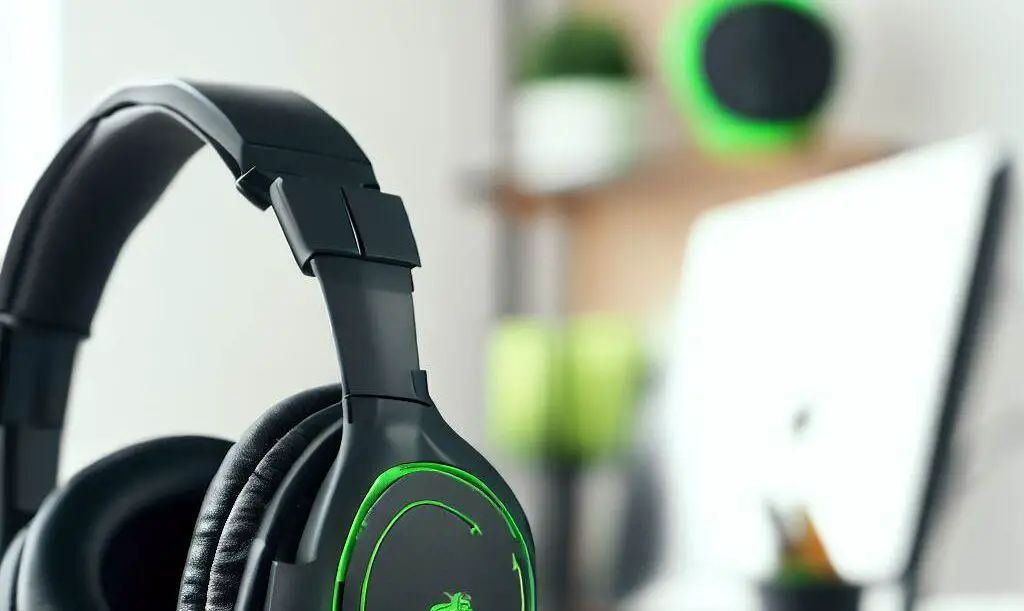Headsets with microphones have become crucial products of late, especially with many people working from home.
Whether it is gaming, meetings, conference calls, internal communication, or making training videos, a quality headset with a responsive, high-fidelity mic can help you communicate with ease while keeping your hands free. Instead of investing in a desktop mic, opting for a headset also helps you free up important desk real estate that you can use to store other important items.
When you look at the high end of headset manufacturers, Razer stands out. As it is with their line of premium laptops that are much sought after, their headsets are built with precision with quality materials. Many discerning users have realized immense value with Razer headsets, especially with their stellar components and feature-rich included software.
Taking this into account, there can be situations where your Razer headset mic sounds too quiet.
This makes it difficult for the people at the other end to hear you and understand your words. If this has happened to you, there are a few things you can try yourself to solve the issue before contacting Razer support.
In most cases, the issue of a Razer headset mic being too quiet can be resolved with software tweaks, usage tweaks, and a few key maintenance actions.
Let us take a look at the excellent range of Razer headsets and what you can do when the headset mic sounds too quiet.
Razer Headset Mic Troubleshooting
If you find your Razer headset mic too quiet, try these steps one by one.
It is likely that one of these steps will fix the issue.
Step 1 – Attach the Mic Properly
A lot of Razer headsets come with mics that are detachable for convenient use. While this gives users the leeway to do without the mic when needed, it adds an extra point of potential failure during use.
A common reason why your headset mic is quiet can be the fact that the mic is simply not attached properly.
Check the attachment mechanism and ensure that the mic is properly attached. To make sure, detach the mic and attach it again securely. When it clicks into place properly, check again to see if the problem has been resolved.
Step 2 – Check Cables and Connectors
If you have a Razer headset that uses a 3.5mm audio jack connection, a degraded cable or a patchy connection with your device might be the problem.
To rule this out, check your headset cable thoroughly. If you see fraying, loosening, or exposed metal wires at any point, you can get your headset serviced or replaced from Razer. Users with DIY skills can try fixing the problem at home, but you should have some skills and watch some Youtube videos before trying this.
Next, check your connector and the audio jack in your device.
If your connector sits loose and wobbly in the audio jack, there might be a connection issue. Also, a buildup of dirt and dust in the audio jack can also make the connection flimsy. Check the audio jack for any play and wobble and clean the interior thoroughly. You can also clean the connector end and try again for a better result.
For wired USB devices, you need to make sure that your headset is plugged into a USB port on the device and not a USB hub. For wireless devices, make sure that wireless interference in the area is kept to a minimum.
Step 3 – Check Your Settings
Whether your headset is connected by cables, USB input, or Bluetooth, it is important that it is set up correctly in your operating system.
In many cases, the headset mic being too quiet is a result of incorrect settings on the software side.
In Windows, you can check this by looking for the audio options in your control panel. When you reach this dialog box, you will notice separate tabs for playback and recording.
You have to make sure that your headset is selected as the active device in both places. If something else is set as default, right-click on your headset and select it as the default device. Depending on your use case, you might also have to set your headset as the default communication device.
When this is correctly set up, it is time to check your levels. Go to the recording tab and double-click your headset icon. The dialog box that opens up has a tab for levels.
Here, you can see the currently assigned recording level of your headset mic. If this is set too low, your headset mic will automatically sound quiet.
As an added bonus, there is an option here to add supplemental gain to the mic for a lot of devices.
If your level is maxed out and the mic is still sounding too quiet, you can start adding a few decibels of extra gain to the signal. While this will also amplify the ambient noise in your room, this can be a good way to get your headset mic signal to an audible level.
The process is similar on other operating systems.
Step 4 – Audio Enhancements
If you have tried all the above steps and the level is still too low, you can check out the tab for enhancements in the same dialog box you opened in the last step.
Certain enhancements, when turned on, can affect the normal audio of the mic and cause issues. Disable all the enhancements listed here and see if your mic performs better.
Conversely, if the enhancements are already disabled, you can try selectively applying them to see if there is a difference.
Commonly, the enhancements you are looking for are those termed “Noise Removal” or “Speech Enhancement”. These tweak the audio in different ways to make the speech stand out from the background noise and improve its intelligibility.
Step 5 – Check Razer Software
For USB and Bluetooth headsets that are compatible with Razer’s Synapse software, you can also start looking at the software options to help sort out the problem.
First, take a look at the mic volume and mic sensitivity options. Increasing the volume can help your mic get louder. Increasing the sensitivity can help it catch the details of your speech better, especially if you speak at low volumes to begin with.
Synapse also provides a range of audio enhancements.
If they are enabled, try disabling them to see if the issue is resolved. If they are disabled, you can experiment by selectively enabling enhancements like the Vocal Clarity or the Ambient Noise Reduction features.
Many headsets also come with a feature that Razer terms “Sidetone”. Enabling this can allow you to directly monitor the signal of your mic through the headset without any internal processing. This is a good way to audition what the raw tone of the mic sounds like.
In certain headset models, Synapse also offers a noise gate and a custom EQ curve feature. These can be creatively used to make your mic louder.
With the noise gate, set a threshold during a time of silence to effectively duck out the ambient noise in your room. Then, you can increase the microphone gain to ensure that only the voice gets amplified.
Similarly, using the provided custom EQ can help make your voice sound louder. To do this, remove very low frequencies, remove muddy frequencies in the 200-300HZ range, and add broad boosts in the 800Hz – 4KHz range to improve intelligibility.
Step 6 – Contact Razer Support
If all the above fails, it’s likely that your headset has a hardware issue.
It’s best to get this fixed or the headset replaced by the manufacturer. Contact Razer support and describe your issue to get a tailored response regarding what you should do next.
Understanding Microphone Sensitivity
Knowing how a microphone works can be a useful tool when trying to troubleshoot issues with your Razer headset mic. An important aspect of any microphone, whether it’s part of a headset or a standalone unit, is its sensitivity. This term is typically used to describe how well a microphone can pick up quiet sounds.
Microphone sensitivity is measured in millivolts per Pascal (mV/Pa). A higher sensitivity means the microphone can pick up quieter sounds, while a lower sensitivity indicates that it is better at picking up louder sounds without distorting. So, if your Razer headset mic is sounding too quiet, it may have a lower sensitivity.
Luckily, many headset microphones, including those on Razer headsets, allow you to adjust this sensitivity, either physically on the headset or through associated software like Razer’s Synapse.
Razer Headsets
The Razer line of headsets contains a diverse set of products, with each product line tuned to serve a particular purpose. They manufacture headsets that connect using 3.5mm audio jacks, wired USB headsets that plug straight into your device’s USB port, wireless USB headsets that come with a USB receiver dongle, and Bluetooth headsets.
Their Barracuda range creates a perfect middle ground between gaming and general use, coming with a balanced, versatile audio profile and convenience features like mobile use and ANC.
On the other hand, the Kraken line is much more premium, providing users with innovative features like haptic feedback for immersive gaming, Razer Hypersense, and Razer Chroma synced RGB lighting (one of the few popular synced RGB lighting standards).
The BlackShark range of headsets is made specifically for eSports gamers, with a focus on low-latency performance, dramatic audio, and comfort features. This product line has both wired and wireless models and boasts interesting features like noise canceling microphones, lightweight design for prolonged use, and breathable memory foam ear cups for added comfort.
Final Thoughts
Razer headsets can provide substantial value across a broad spectrum of use cases. While the Razer name is beloved by gamers, office workers and the work-from-home crowd have begun taking notice of the brand in the last couple years.
If your headset mic is sounding too quiet, following these tips will give you a higher chance of resolving the issue on your own without having to rely on Razer support. It’s likely that one of the above steps will help make your mic sound louder and fuller.
FAQs
Why does my Razer headset mic pick up a lot of background noise?
This could be due to high microphone sensitivity or enabled microphone enhancements that are designed to pick up more sound. Check your settings and adjust accordingly. Also, consider your environment; noisy or echoey rooms will inevitably affect your mic’s performance.
Can I use my Razer headset with consoles like Xbox or PlayStation?
Many Razer headsets are indeed compatible with gaming consoles. However, you should check the product specifications to ensure compatibility with your specific console.
How do I update my Razer Synapse software?
Razer Synapse should automatically prompt you when an update is available. If it doesn’t, you can manually check for updates within the Synapse software by navigating to the settings.
What can I do if my wireless Razer headset is having connectivity issues?
First, ensure that the headset is charged and the wireless receiver is properly connected. You could also try moving closer to the receiver or removing any potential sources of wireless interference. For a detailed guide on troubleshooting Razer headset connectivity, see here.
How long is the warranty period for Razer headsets?
Razer headsets typically come with a 1-2 year warranty, which is fortunate since users occasionally encounter headsets that simply stop working. However, the warranty period may vary depending on the model and the region you’re in, so it’s best to check the warranty information provided with the product.

